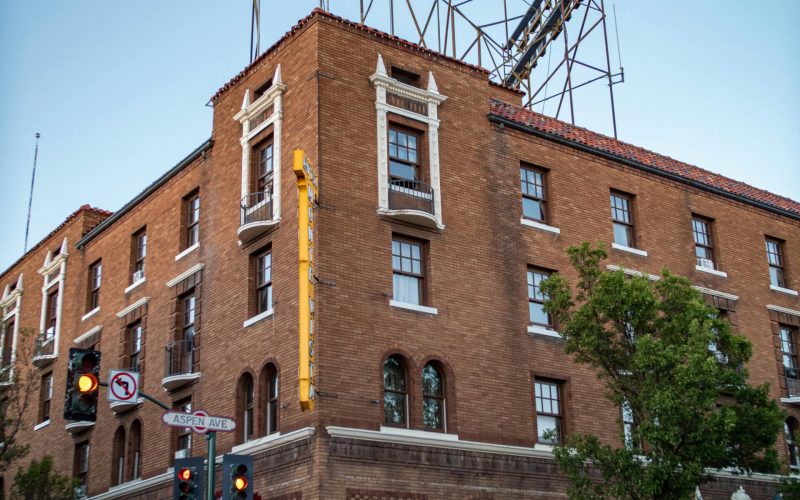By Ryan T. McGuire
Does your city of residence impact your divorce? You might assume it does not matter. Divorce is primarily governed by state law, so any city within the state should yield the same result. But divorce often hinges on money, and in high-cost cities like Flagstaff, financial realities can significantly shape outcomes. Flagstaff’s cost-of-living is 15% higher than the state average and 14% above the national average. [1] How does this affect spousal support determinations?
The short answer is yes, although the connection is indirect. Arizona’s spousal maintenance statute, A.R.S. § 25-319, does not explicitly list city of residence as a factor. [2] However, the financial realities of living in Flagstaff permeate multiple statutory considerations, influencing everything from what constitutes “reasonable need” to whether a spouse can realistically achieve self-sufficiency while living in the city.
This post examines Arizona’s framework for determining spousal maintenance and explores how Flagstaff’s elevated cost-of-living influences that analysis. For couples navigating divorce in northern Arizona’s mountain metro, understanding these geographic factors is useful for realistic planning.
Understanding Spousal Support Under A.R.S. § 25-319
Under A.R.S. § 25-319, courts follow a two-step process when deciding whether to award spousal maintenance and, if so, how much and for how long. This framework balances supporting dependent spouses with encouraging self-sufficiency. Both steps are influenced by the economic realities of where the parties live (and where they lived during the marriage).
The first step is to establish eligibility. Before awarding spousal maintenance, the requesting spouse must satisfy at least one of five threshold criteria under A.R.S. § 25-319(A). The very first ground in the statute is that the spouse “lacks sufficient property, including property apportioned to the spouse [in the divorce], to provide for that spouse’s reasonable needs.” But are “reasonable needs” different in high cost-of-living cities like Flagstaff than in Yuma? Other grounds include: lacking adequate earning ability, being a custodial parent whose circumstances preclude employment, having contributed significantly to the other spouse’s career or education, and being in a long marriage at an age limiting employment prospects. Each requires assessing financial circumstances that cannot be separated from cost-of-living considerations.
The second step is to determine the amount of support and how long it should last. A.R.S. § 25-319(B) requires judges to consider thirteen statutory factors “together and weighed in conjunction with each other,” with no single factor receiving greater weight than another. The statute mandates a holistic analysis.
The thirteen factors include: the marital standard of living and marriage duration; the requesting spouse’s age, employment history, earning ability, and physical and emotional condition; the paying spouse’s ability to meet both parties’ needs; the parties’ comparative financial resources and earning abilities; contributions and career sacrifices made for the other spouse’s benefit; ability to contribute to children’s education; the requesting spouse’s financial resources and ability to meet needs independently; time needed for education or training; waste or concealment of marital property; health insurance costs; and damages from criminal conduct where the other spouse or child was the victim.
The Arizona Supreme Court has established guidelines for maintenance amounts, but courts may deviate when applying them would be “inappropriate or unjust.” Arizona’s current spousal maintenance guidelines took effect in July 2023. [3] The goal is to award maintenance “for a period of time and in an amount necessary to enable the receiving spouse to become self-sufficient.”
The Flagstaff Factor: How High Cost-of-Living Influences Spousal Support
Although none of the factors from A.R.S. § 25-319(B) directly connect to the parties’ city of residence, several factors can be impacted when the parties live in a city with a high cost-of-living like Flagstaff.
Factor 1 looks at the standard of living the couples enjoyed during the marriage. If one of the goals of imposing spousal support payments is to ensure the parties can maintain a similar life to what they had during the marriage, the city in which they live and the cost-to-live there should be considered. Divorce should not force one party to move from Flagstaff to Yuma because they can no longer afford to live in Flagstaff.
Factor 3 weighs the earning ability of the spouse seeking maintenance. Earning ability cannot be assessed in a vacuum. The question is not simply what salary the spouse could get, but the purchasing power of the salary. A $45,000 annual wage might enable self-sufficiency in some places but fall short in Flagstaff, where the average salary is $62,691. [1] Flagstaff’s smaller economy (population approximately 75,343) offers a narrower range of career options than Arizona’s metropolitan areas. Therefore, a person may not be able to find work in their industry of expertise. Also, the largely tourism-based economy creates seasonal fluctuations and may not provide stable, year-round positions in all fields. A spouse with marketable skills may struggle to achieve self-sufficiency if the local job market cannot absorb those skills or available positions pay wages insufficient to meet Flagstaff’s elevated costs.
Factor 4 considers the payor spouse’s ability to meet both parties’ needs. The cost-of-living impact is most direct here. A spouse earning $80,000 annually faces the same elevated Flagstaff costs while attempting to fund the other spouse’s reasonable needs. Unlike in lower-cost Arizona cities where the same income might comfortably support both parties, Flagstaff’s costs—14% above the national average—may make it genuinely difficult or impossible for the paying spouse to meet both parties’ needs without significant decline in living standards. The court must balance these competing needs against shared geographic expenses affecting both parties equally.
Factor 5 analyzes the comparative financial resources and earning abilities of both spouses. Income disparity between spouses takes on added significance relative to local cost pressures. In Flagstaff, the lower-earning spouse faces housing costs less affordable than the U.S. average and overall costs exceeding the state norm, making the journey to self-sufficiency steeper. Flagstaff’s economy provides fewer opportunities for professional advancement in many fields compared to Arizona’s other major metropolitan areas. A spouse with strong credentials may find their earning ability artificially capped by the local market, creating a persistent disparity that might not exist in cities like Tucson with a lower cost-of-living.
Factor 9 looks at the ability of each spouse to meet their own needs independently. Asset values must be understood relative to local costs. A spouse receiving $200,000 in property division faces different prospects in Flagstaff than elsewhere in Arizona. That sum might represent a down payment on modest Flagstaff housing where it could purchase a home outright elsewhere in the state. This matters when evaluating whether property division alone can meet a spouse’s needs without requiring ongoing maintenance. Courts must account for this reality when deciding whether a spouse truly has the resources to be self-sufficient.
Conclusion
Geography may not be explicit in Arizona’s spousal maintenance statute, but it is impossible to disconnect from the economic realities that drive the analysis. Flagstaff’s elevated cost-of-living—15% above the state average and 14% above the national norm—impact the determination of reasonable needs, earning ability, self-sufficiency prospects, and the paying spouse’s capacity to support two households. Although A.R.S. § 25-319 does not list “city of residence” as a factor, the financial pressures unique to mountain town living influence at least five of the thirteen statutory considerations courts must weigh.
Ultimately, where you live matters, not because the law says so explicitly, but because economic reality insists on it. Attorneys and self-represented litigants alike should ensure that the cost-of-living, especially in cities like Flagstaff, is accounted for in spousal maintenance analysis. Like almost everything in family law, the facts of each case matter. No two cases are exactly the same.
Sources:
[1] Cost of Living in Flagstaff, AZ | Cost of Living Index | ERI
[2] 25-319 – Maintenance; guidelines; computation factors
Author:
Ryan T. McGuire is a law clerk at Woodnick Law PLLC and a second-year student at the Sandra Day O’Connor College of Law. He leverages his master’s degree in philosophy to produce thorough legal research and writing, with a focus on family law matters. Ryan brings a strong foundation in legal analysis and academic interests spanning family, criminal, and intellectual property law.



